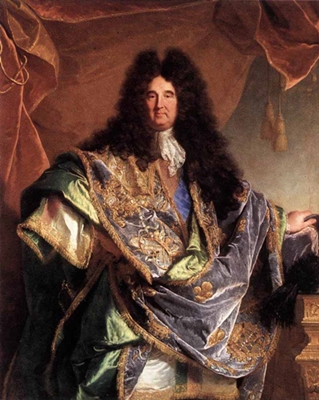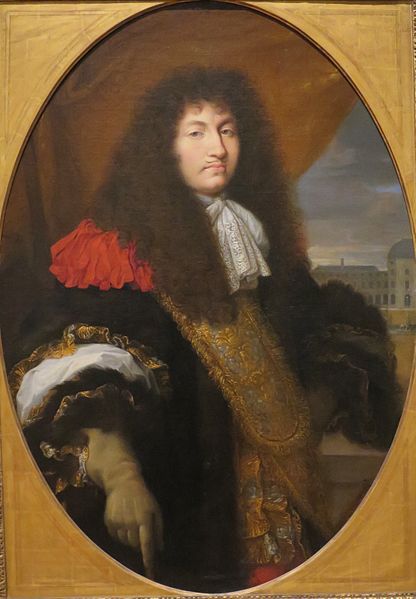Dangeau’s Diary, February 1688

8th. — After supper, Monsieur de Luxembourg introduced at the Princesse de Conti’s, three Italian comedians, some of the best dancers, and Mademoiselle de la Lande, Monseigneur and Madame la Duchesse, were present. The spectacle was very diverting. Monsieur de Luxembourg had caused four guards, belonging to Noailles’ company, as tall as giants, to be disguised in girl’s clothes. Some of the courtiers wished to censure this divertisement, which was an indirect attack upon the Princes, who are, at present, desirous of marrying the Princesse de Conti.
14th. — Langlade underwent the question, both ordinary and extraordinary, but confessed nothing. He is, however, supposed to be guilty.
16th. — The King has resolved to expel all the remaining Huguenots the kingdom. He confiscates their property, and allows them to retire whither they please. They are to be escorted out of the kingdom. Langlade has had his final trial, and is condemned to the galleys for nine years, and is instantly to be chained to the oar. His wife is condemned to banishment for nine years and to be detained in prison till she has paid Monsieur de Montgommery the 10,000 livres stolen from him and all the law expenses.
18th. — The four principal apartments at Marly have been refurnished. Their former hangings, which were only damask, have now been exchanged for velvet and brocade. The colours only have been preserved: red for the King, green for Monsieur, blue and pink for Monsieur and Madame.
20th. — Monsieur de Croissy has written an answer to a libel which has been published at Rome against the protest of Monsieur Lavardin. Some ecclesiastics have made remarks upon this production, and as sert, that the King ought to have some parts of it altered.
21st. — The King has ordered Monsieur de Croissy to revise his answer to the libel at Rome. There are objections made to three different parts of it. It has been corrected and reprinted.
23d. — News has arrived from Rome, that Monsieur de Lavardin had gone to the church of St. Peter, and that the masses, already begun, were concluded without recommencing others. It is likewise stated, that the Queen of Sweden had given an audience to Monsieur de Lavardin, who went there with a suite of eleven carriages, but without Jioques. The Queen afterwards ordered her people to go to the Farnese palace, to receive the French.
24th. — Monsieur le Prince has mentioned to the King his intention of marrying Mademoiselle de Bourbon, his daughter, to the Prince de Conti. The King very highly approved of the match, but it appears that he will not do anything considerable for the Prince de Conti at present. He has pardoned him, but has not yet entirely forgotten.
25th. — Monsieurde Croissy’s pamphlet is published, with the correction of the three articles which were objected to, but which Monsieur de Croissy asserts, might be very well maintained.



2 Comments
Eva Veverka
The descriptor Monseigneur is used and there is also Monseiur.
Are either of these Philippe?
When the Monsieur de Luxembourg had the guardsmen dress up as girls and D’angeau said it was remarked that it was an insult to the ‘princes’ what did he mean?
I don’t blame D’angeau for not using names I recognize easily I would just like to understand the intrigue.
Aurora von Goeth
Monseigneur means the Dauphin, that was how he was referred to. Monsieur means the King’s brother. I guess he means the widowed Princesse de Conti, who had many admirers, but I can’t tell you what exactly it is about at the moment.